
- Permbajtja
- prev
- next
- prev
- next
Architecture in Squid Game
Directed by Hwang Dong-hyuk, Squid Game revolves around a contest where 456 players, drawn from different walks of life – but each deeply in debt – play in a series of children’s games. The winner cashes a 45.6 billion Korean wons prize. A very different destiny awaits those who lose.
Desperation, survival, greed, violence and surveillance are the keywords of the South Korean dystopic survival drama inviting us to reflect on the contradictions of modern society. Director Hwang Dong-hyuk said the series is an allegory of contemporary capitalism, but it also takes aim at what we deem entertainment. After all, Romans created beautiful architectures like the Coliseum in Rome to let people enjoy gruesome competitions. Squid Game was watched by over 111 million users worldwide in the first 28 days.
“Aesthetically speaking, we created places and displays making viewers think about the hidden intentions of Squid Game with us,” Explains art director Chae Kyoung-sun.

The whole series’ architecture plays with contrasts: on a side are venues and elements in pastel colours recalling childhood memories. On the other side are the characters’ fears as well as alienating spaces, starting from the dorm.
After being willfully abducted, Squid Game players wake up in a warehouse with stacked bunk beds disposed to create an amphitheatre. “Rather than treating them like people, the art director suggested the contestants be presented like objects piled on the warehouse shelves.” Says director Hwang Dong-hyuk in an interview. At the end of every game, a giant transparent piggy bank is filled with money; 100.000 Korean won for each eliminated player in order to tease and tempt the remaining participants.
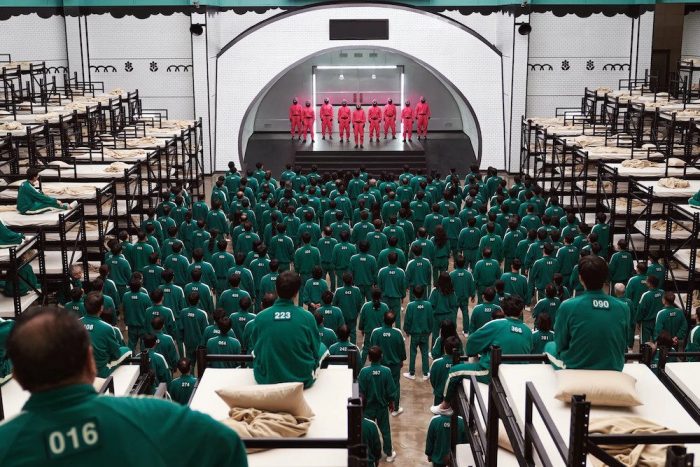
Before and after every game, players walk through colourful and unsettling staircases, inspired by the Relativity masterpiece by Dutch artist Escher. In the artwork, several mind-bending staircases are arranged in a world with upside-down gravity. The set features K-Pop pastel colours contrasting with the ‘upside-down’ spirit of the characters. The design also refers to Ricardo Boffil’s La Muralla Rosa in Spain, says Hwang Dong-hyuk.
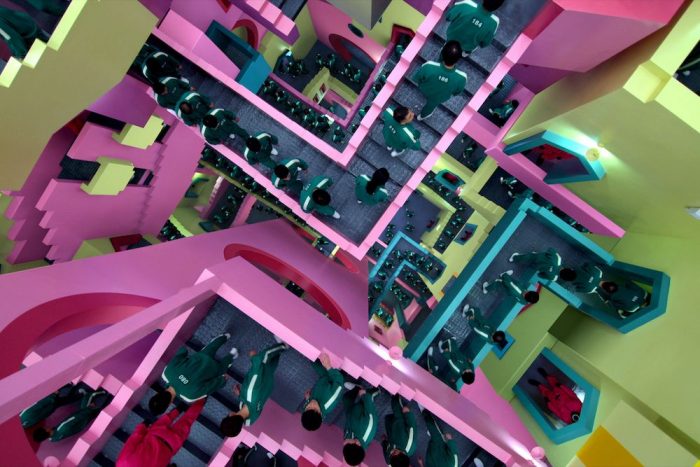
Red Light, Green Light is the first game during which players understand the actual rules of the contest. An intimidating gigantic robotic doll with camera eyes towers over the participants evoking prison surveillance. The second competition is set in a colourful adult-sized playground with slides, climbable structures and fences. “All sets were designed to bring back childhood memories when all things look bigger and safe,” says Chae Kyoung-sun.
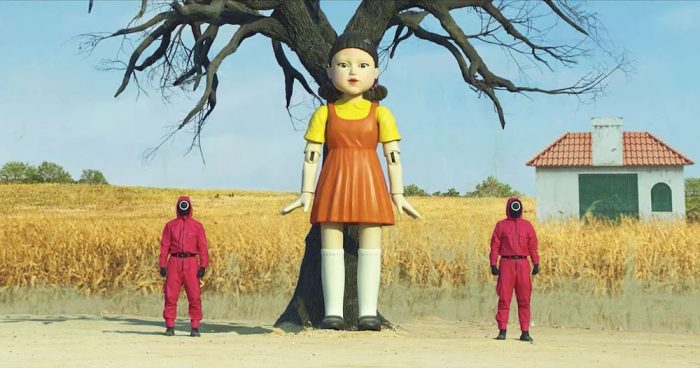
Most sets were built from scratch with little CGI post-production. In Korea, kids used to play marbles in the alleys. From here, a fake low-rising neighbourhood was created to bring characters and viewers back to memory lane. “The result is a feeling of strange nostalgia and odd tension.” More computer graphics were obviously used for the Thug of War and the Stepping Stones competitions. Squid Game, the last challenge, was set in the same space as the first game.
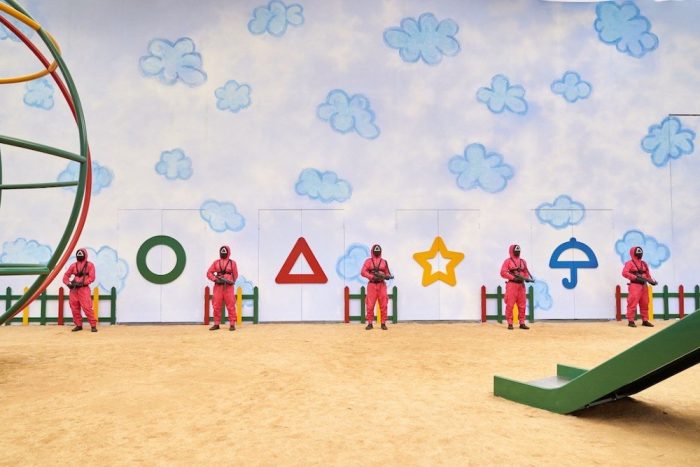
Brightly illuminated serene white and minimalistic spaces by Zaha Hadid and Santiago Calatrava inspired the design of the waiting room. Instead of cocooning the player, the art director explained that they created “some kind of uneasy feeling that comes from a white room, not knowing what will happen next. we wanted to create an unknown space.’
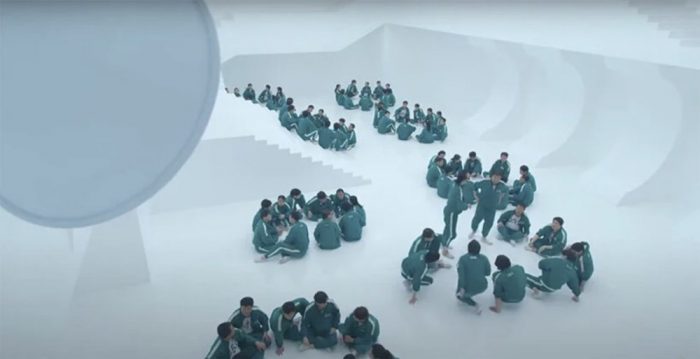
All images: frames by Squid Game – Courtesy of Netflix.